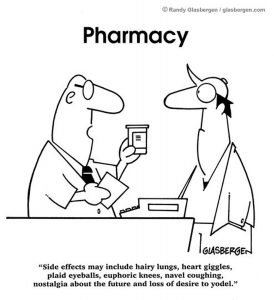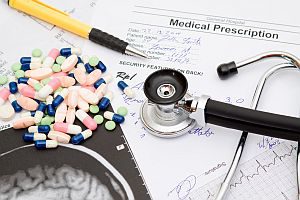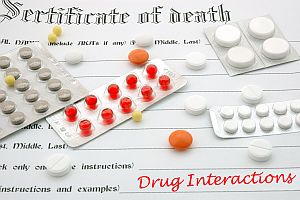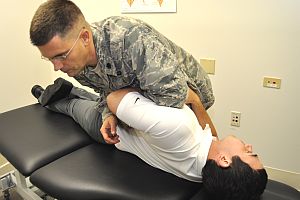Opiates Ineffective for Chronic Back or Hip Pain
 A new study just published in the Journal of the American Medical Association finds that opioids are not an effective solution for chronic pain.
A new study just published in the Journal of the American Medical Association finds that opioids are not an effective solution for chronic pain.
In this article, researchers from the University of Minnesota studied 240 patients who had chronic back, hip, or knee arthritis pain. Half of the study subjects received opiates; the other half received non-opiate pain medications. Patient progress was evaluated at 3-months, 6-months, 9-months, and one year.
The study found:
- There was no difference in pain-related function between the two groups.
- At 12 months, the nonopioid patients had less pain than did those who received opiates.
- “The opioid group had significantly more medication-related symptoms over 12 months than the nonopioid group”
The study authors write:
“Among patients with chronic back pain or hip or knee osteoarthritis pain, treatment with opioids compared with nonopioid medications did not result in significantly better pain-related function over 12 months. Nonopioid treatment was associated with significantly better pain intensity, but the clinical importance of this finding is unclear.”
Previous research has found that about 20% of patients with musculoskeletal pain are prescribed narcotic pain medications for their symptoms, and another recent study found that 36% of people who overdosed from opiates had their first opioid prescription for back pain.
Another recent study found that chiropractic patients are less likely to use opiates for their pain than are medical patients.
From this research, it seems clear that it’s risky to prescribe opiates for musculoskeletal pain. Chiropractic care is a proven safe and effective approach for both chronic and acute back pain.
Krebs EE, Gravely A, Nugent S, Jensen AC, DeRonne B, Goldsmith ES, Kroenke K, Bair MJ, Noorbaloochi S. Effect of Opioid vs Nonopioid Medications on Pain-Related Function in Patients With Chronic Back Pain or Hip or Knee Osteoarthritis Pain: The SPACE Randomized Clinical Trial. JAMA. 2018 Mar 6;319(9):872-882. doi: 10.1001/jama.2018.0899.

 It seems as if you can’t check the news without finding at least one story of a life being lost to drugs. What is perhaps most concerning is that, all too often, the person who succumbed tragically for drug-related reasons is fairly young. And, a study released in the journal Addiction found that opioids — or narcotic painkillers like Vicadin, oxycodone, codeine, and morphine — are largely to blame.
It seems as if you can’t check the news without finding at least one story of a life being lost to drugs. What is perhaps most concerning is that, all too often, the person who succumbed tragically for drug-related reasons is fairly young. And, a study released in the journal Addiction found that opioids — or narcotic painkillers like Vicadin, oxycodone, codeine, and morphine — are largely to blame. People are becoming increasingly aware of the dangers that can result from the overuse of antibiotics. When antibiotics were first discovered in the early 20th century, researchers believed that they had found the key to conquering many deadly diseases. Since that time, antibiotics have certainly helped to cure diseases that once wiped out large parts of the population. However, there is growing evidence that antibiotics are now being used too frequently, and that they are often being used in inappropriate circumstances. This has led to many previously curable diseases becoming antibiotic-resistant, which means that a cure now requires the use far stronger antibiotics. In fact, some diseases have now become resistant to nearly all antibiotics. It is obvious that if antibiotic use continues in this way, we may have a major health crisis on our hands.
People are becoming increasingly aware of the dangers that can result from the overuse of antibiotics. When antibiotics were first discovered in the early 20th century, researchers believed that they had found the key to conquering many deadly diseases. Since that time, antibiotics have certainly helped to cure diseases that once wiped out large parts of the population. However, there is growing evidence that antibiotics are now being used too frequently, and that they are often being used in inappropriate circumstances. This has led to many previously curable diseases becoming antibiotic-resistant, which means that a cure now requires the use far stronger antibiotics. In fact, some diseases have now become resistant to nearly all antibiotics. It is obvious that if antibiotic use continues in this way, we may have a major health crisis on our hands.


 Take a look inside the average American’s medicine cabinet and you are likely to find out-of-date prescription medications, half-used bottles of lotion, some painkillers and a box of Band-Aids. Some of these are useful, and some should have been disposed of long ago. Along with the annual maintenance that you perform on your smoke detector, your medicine cabinet should have a thorough evaluation and clean-out once a year as well.
Take a look inside the average American’s medicine cabinet and you are likely to find out-of-date prescription medications, half-used bottles of lotion, some painkillers and a box of Band-Aids. Some of these are useful, and some should have been disposed of long ago. Along with the annual maintenance that you perform on your smoke detector, your medicine cabinet should have a thorough evaluation and clean-out once a year as well.

